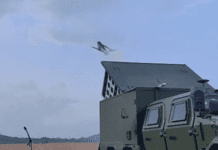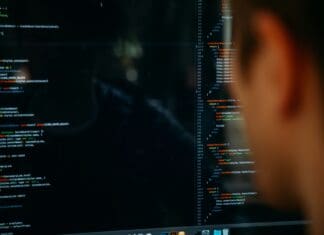This post is also available in:
 עברית (Hebrew)
עברית (Hebrew)
Written by Or Shalom
The Milipol exhibition, held in Singapore on April 3-5, 2024, dealt as always with homeland security technologies. The exhibition, in collaboration with Singapore’s security agencies and the Ministry of Public Security, the HTX Science and Technology Agency for Homeland Security, and of course the management of Milipol (France)[1]. The exhibition featured advanced security systems, specialized technologies for enforcement entities, specialized technologies for advanced control units (land and sea), border protection and critical infrastructure. The exhibition hosted some 350 presenting companies and technologies, various delegations and quite a few visitors from 25 countries worldwide (more than 10,000 guests). As such, the exhibition was particularly attractive for locating interesting technologies and innovation, opportunities, collaborations and following the HLS market. This is an interesting trend in itself to look into trends of supply, demand and the future. It is interesting, as I will review below, to see the connection between the Ministry of Homeland Security and the research and academic bodies in accelerating dedicated developments that integrate and significantly upgrade capabilities in the field of homeland protection, security, and HLS in general.
The challenges of homeland security and defense are complex. As such, planning solutions for HLS issues and thwarting terrorist threats require analysis of the nature of the threat, tracing the attacker’s activity patterns, and characterizing them according to the changing conditions. There is often a need to consider regulatory criteria (like using OSINT intelligence under the GDPR, etc.). Alongside these, it is required to have a familiarity with advanced technological trends and capabilities, as well as their assimilation.
The implementation of AI in HLS systems for various uses:
One of the new trends in recent years is the use of AI-based systems. This use enables, among other things, the fusion of information between different sources, rapid processing and integration in a way that contributes to smart technologies that ideally support the required actions. Thus, for example, the ability to equip oneself with a dedicated kit for collecting all the information from security cameras and other technological sources in order to combine them in the process of investigation (forensics). Here, the system assists with precise decisions based on AI and ML analytical capabilities.
This trend was also prominent in the exhibition where displays and capabilities combined analytics and AI for various uses (from security cameras, mirroring systems, drones, radars, and more)[2]. This trend is reflected in the AI and Homeland Security event, with the goal of integrating skills in this field for the benefit of homeland security[3]. One of the topics the exhibition focused on was improving AI capabilities through Multi-Model GenAI[4]. This model provides the system with varied data from different sources (such as text, images, audio, etc.) in a way that condenses the system and allows for output accuracy based on these products. Thus, for example, in the process of field analysis or forensic investigation from a crime scene, the use of Multi-Model GenAI will be expressed in the collection of informational sources and variety by various sources such as smart glasses combined with textual information in a way that will yield a more in-depth analysis.
The Market of Drones and Anti-Drone Systems:
The exhibition featured numerous drone-based solutions for security or use on the battlefield with advanced capabilities (like sharp-resolution photographic systems), a combination of AI-based analytics to improve performance, as well as support mission plans. These implementations demonstrated the ability to gather information from various sources for the purpose of obtaining results and possible output through a Multi-Model GenAI process. For example, collecting images, videos, and metadata like height, distance, mapping, etc. An interesting R&D from Columbia University presented the need and the significant advantage of integrating AI into the arsenal of capabilities. This is in response to improved mine detection using drones, as the ability to detect landmines is challenging due to the fact that most mines have a reduced metal content (EMI), along with the locations and random distribution that increase the challenge. Researchers developed a concept over a tested area and achieved success using algorithms that had previously been trained against 70 types of mines, munitions and explosive charges using processes of image processing, analysis and classification.[5]
The most prominent trend in the drone market is the ability to integrate the drone as part of a complete set of systems that communicate with one another. Here, too, another example is the ability to realize these capabilities in favor of holding control over land conditions, environmental variables, etc. (such as a combat environment requiring a security foothold). A possible implementation of this method is using drones for field analysis, detecting available walls and attaching to them. From then on, the drone serves as a security camera to hold tactical space until the next task. The need for mission drones (launch and forget) is also interesting, and its goal is to ensure the operation and completion of the mission as an autonomous (semi-autonomous) and independent unit. So is the ability to analyze the area, to deal with obstacles and barriers, and to plan the task optimally as a solitary or part of a swarm[6]. AI and ML can ensure this capability. The widespread use of drones in recent years for various uses, including for intelligence gathering and attack purposes, also increases the demand for anti-drone systems. The need is increasing both as defense systems (including detection and disruption capabilities) for critical infrastructure defense, border protection systems, and even in sports events. As an example, in preparation for the 2024 Olympics, France declared the drone threat as a high priority in security protocols (in terms of terrorism)[7].
The solution arsenal when it comes to dealing with drones is divided into detection and blocking-based technological solutions, and kinetic solutions for shorter ranges (especially in changing conditions where a detection system can’t be immediately deployed). In a Pentagon-sponsored experiment in 2021, several tactical systems were tested, including the use of kinetic and firing systems[8]. These capabilities obviously require high firing skills for efficiency, maximum accuracy, and effectiveness. The trend of computerized shooting systems will ensure a higher level when achieving this goal. Thus, for example, the Israeli Arbel system unveiled this week – the system improves the rapid response time thanks to a built-in computerized firing control system[9]. The exhibition presented quite a few dedicated solutions for various effective ranges (7-10 km) for systems that include a detection system, a disruption system, or a substitute that includes detection and disruption capabilities. The exhibition displayed rapid deployment capabilities, tactical assembly systems in accordance with customer demand or as a separate unit for carrying and transport. The solutions in the drone market still have quite a few challenges such as increased frequency usage, complex and changing environments (open space, urban environment, critical infrastructure, prisons, etc.), dealing with autonomous drones, and the ability to locate drone operators[10].
The Robotics Market:
The demand for robots for homeland security, border protection and rescue operations has increased in recent years. The trigger for this also relies on the ability to integrate AI and ML and thus optimize the task. The use of robots is varied – they can be used for clearing IEDs or mines, for reconnaissance missions, and more. Robot Dogs developed by Ghost Robotics were specifically designed for missions of reconnaissance, carrying equipment, and scanning areas above and below the ground with high passage capabilities that were significantly improved in recent years. The understanding that they can be used on the battlefield and reduce the risk to soldiers (the security and safety of the forces) raises demand and contributes significantly to research, development and improvement of performance. In a study led by Xu Cheng, professor of mechanical engineering at the University of Nanjing, science and technology, there has been a significant improvement in shooting performance. The experiment included the assembly of a 7.62 mm machine gun capable of automatic reloading and shooting 750 rounds per minute for a distance of 100 meters. The study’s findings revealed a significant achievement of 2 inches (5 cm) of dispersion thanks to the special base developed at the university. This is further proof of the effectiveness of robots in performing various tasks, from reconnaissance to shooting[11]. The exhibition showcased robot dogs in various missions, and showed a significant improvement in abilities to bypass obstacles from previous years.
Minimization and nanotechnology capabilities also affect the machine and robot industry and meet HLS needs for various uses. Minimization has tactical effects (small, carried, removable, and agile) proven in various disciplines. The Singapore Research Institute Nanyang Technological University introduced a hybrid scientific capability that demonstrates an interesting realization for search and rescue purposes[12]. The research institute has worked on the development of a cyborg – a real 5cm long insect that can carry a weight of 15 grams that includes an infrared camera and a processor designed to identify people living among ruins and transmit the location of survivors to operators[13]. The development of these abilities is interesting both because of the hybrid direction and because of the dual-use implications. It is clear that alongside its use in the civilian market, it can also bring additional uses for the military sector and answer various needs, such as stealth capabilities for detection missions, providing a snapshot of hostage situations, complex scenarios requiring a situation report for preliminary analysis (provided by an autonomous robot or a hybrid robot – as is the current development).
Terrorism threats require the continued leveraging of development research and the empowerment of the HLS market. At the same time, the strengthening of cooperation between countries will also impact the addition of information and scenarios on a global scale (different locations, different environments) in a way that will enable systems to teach themselves and improve performance and security.
The author is a security, cyber and HLS technology expert and consultant to government ministries and defense industries. He holds a master’s degree, as well as civil and national qualifications in the realm of HLS and Cyber Security. He has experience in consultation and business development for security companies and groups in matters of planning and building defense, innovation and security technology, exercises, and training in security and cyber.
[1] https://www.htx.gov.sg/who-we-are
[2] https://i-hls.com/he/archives/123174
[3] https://www.techxsummit.sg/map-txs2024-conference
[4] https://ai.meta.com/tools/system-cards/multimodal-generative-ai-systems/
[5] https://youtu.be/VBnNqBzUHdQ?si=wr5y1rTAJRmCmCSv , https://www.mdpi.com/2072-4292/12/5/859
[6] https://www.mdpi.com/2072-4292/12/5/859
[7] https://i-hls.com/he/archives/120550
[8] https://i-hls.com/he/archives/110981
[10] https://i-hls.com/he/archives/110643
[11] https://www.scmp.com/news/china/science/article/3253603/chinas-robotic-dog-can-shoot-pro-what-us-doing
[12] https://www.straitstimes.com/singapore/singapore-s-cyborg-cockroaches-on-display-at-homeland-security-event-at-mbs


























